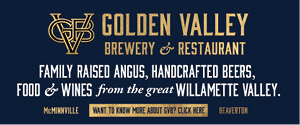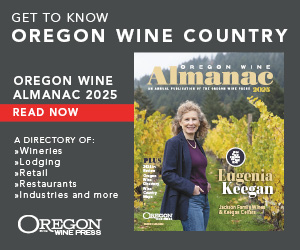Umami All the Way
A guide to pairing wine with Asian cuisines
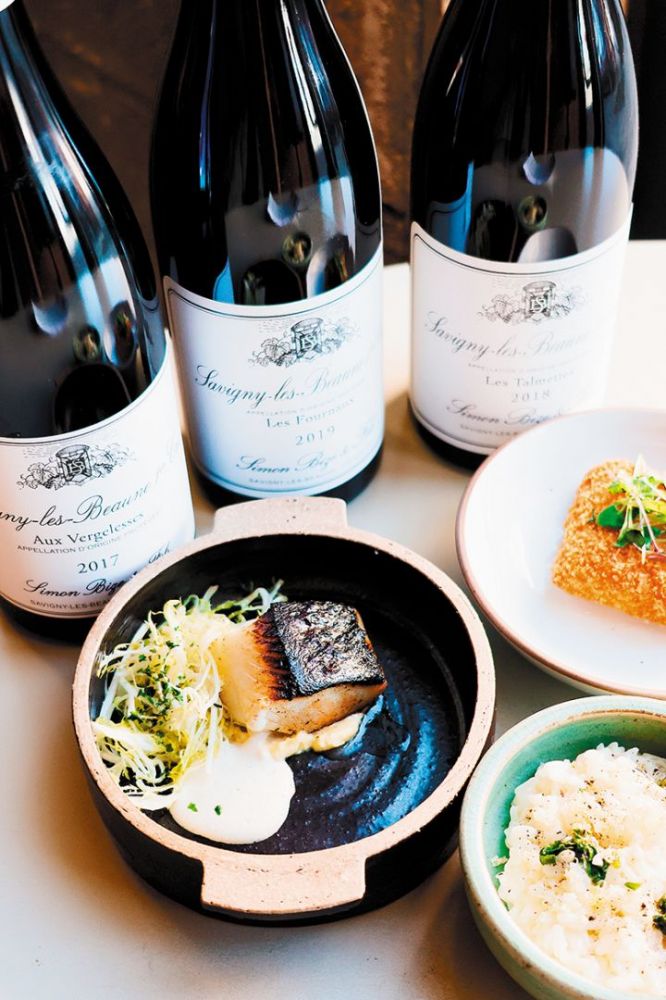

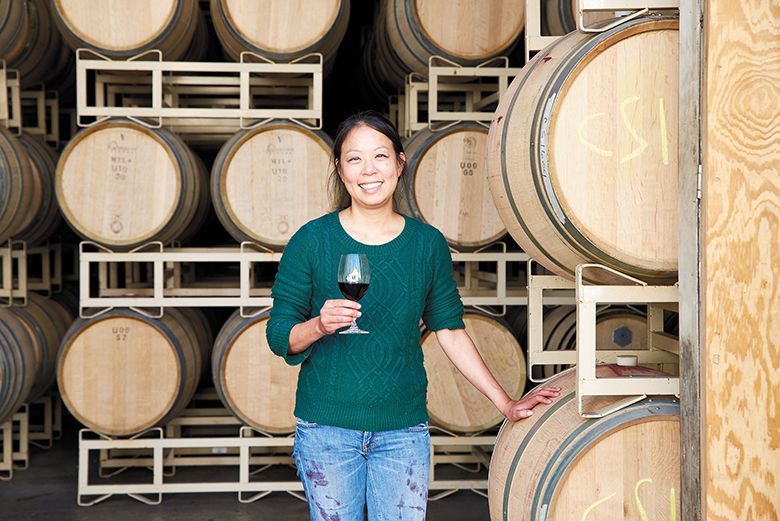
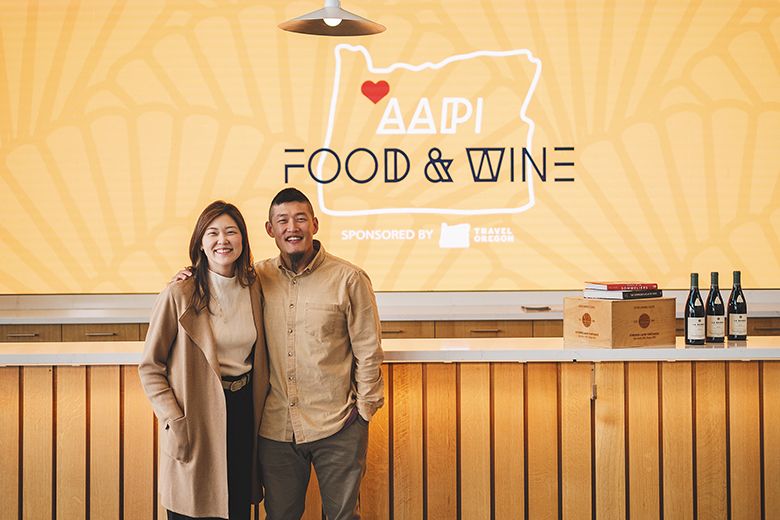

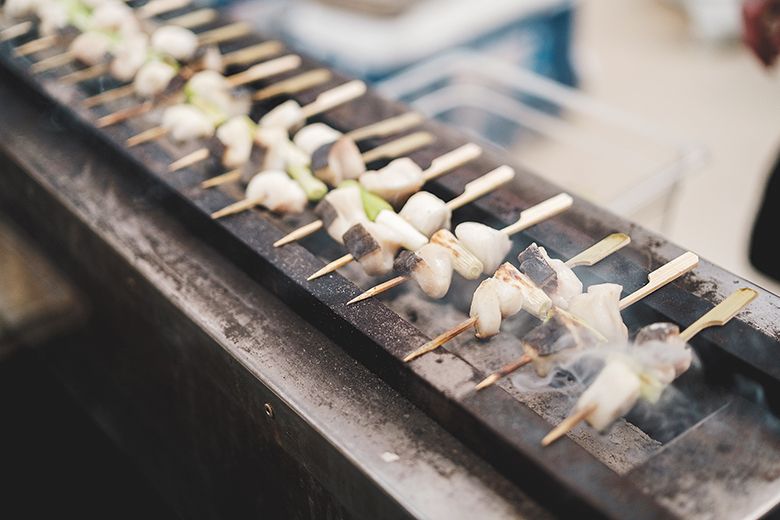
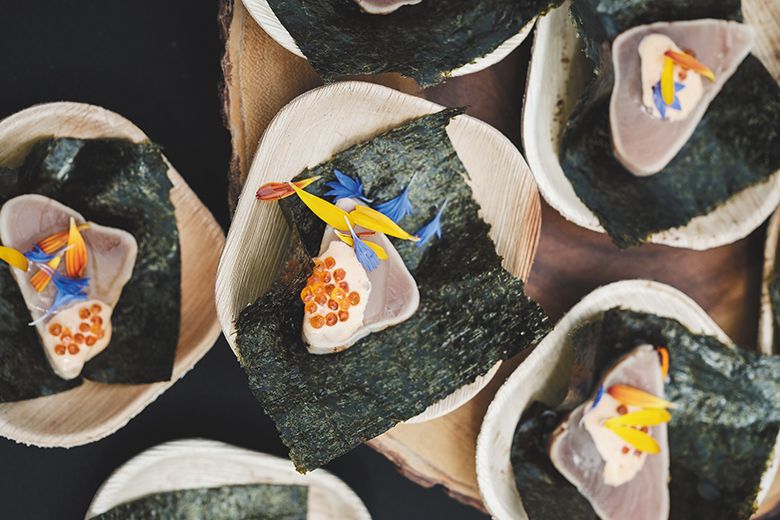
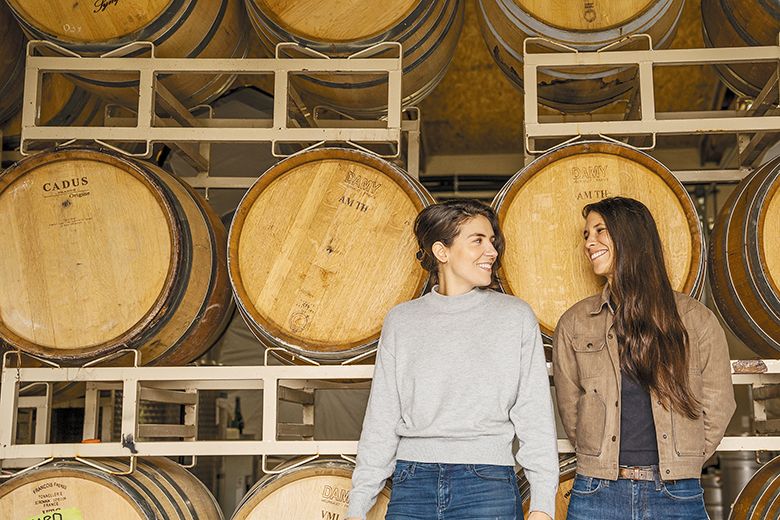
By Aakanksha Agarwal
Jessica Mozeico, founder and winemaker of Et Fille Wines in the Willamette Valley, always felt any conversation around wine needed a more equitable approach.
“People often describe wine with vague terms like ‘tropical fruit,’ and I always wonder— what does that mean? Are we talking about unripe mango, papaya, calamansi, rambutan? The catch-all phrase doesn’t reflect the specificity of flavors from my own experiences,” explains Mozeico.
The traditional wine world, determined by European influences, has traditionally ignored cultural nuances when pairing. Sommeliers are trained to match wine with French, Italian and Spanish dishes, thus ignoring the vast diversity of Asian flavors, ranging from the delicate umami of Japanese dashi to the fiery heat of Sichuan peppercorns.
For decades, the prevailing wisdom remained simple: if eating Asian food, order beer. Winemakers and sommeliers from Oregon’s Asian American and Pacific Islander, or AAPI, community rebel against this outdated notion. They are redefining how we regard wine and food pairings.
Reframing the Conversation
For Lois Cho, winemaker at Chehalem Mountains’ CHO Wines and founder of the annual event AAPI Food & Wine, the journey started with a simple, yet powerful question: How does her heritage influence the wines she makes? “The answer always came back to the food we grew up eating and dishes we eat today,” said Cho.
Cho founded nonprofit AAPI Food & Wine, an event highlighting winemakers and producers whose experiences, like hers, were largely absent from the mainstream wine world. Her wines, often marked by bright acidity and mineral-driven elegance, are crafted to complement a variety of Asian cuisines.
“We grew up eating homemade Korean food, along with a number of other cuisines,” Cho adds. “Having lived in Vancouver, Canada and Southern California, we were exposed to Indian, Chinese, Thai, Japanese and Filipino dishes as part of our everyday lives. That exposure influences the way we think about wine, too.”
AAPI Food & Wine returns for its third year May 17-18, at Stoller Family Estate in Dayton. The event delivers an all-star lineup of AAPI chefs and winemakers. Celebrating their vibrant cultures with unique flavors. Expect samplings from favorites like Chochu Local Island BBQ, Oma’s Hideaway and Toya Ramen, alongside tastes from wineries, including CHO Wines, Landmass Wines and Et Fille Wines.
Cho, along with husband Dave, continues to works industriously to expand the boundaries of traditional wine discourse. May is a particularly meaningful month for the Chos, as it celebrates both AAPI Heritage Month and Oregon Wine Month.
She recalls how a simple idea grew into something much larger. “When my good friend, food and wine photographer Joshua Chang of Foundry 503, suggested hosting a potluck photo shoot, I agreed it was a great idea… but suggested we invite everyone. AAPI Food & Wine, a 1,000- person event, is very popular, selling out each year.”
The Science of Pairing
The diverse flavors of Asian food, ranging from bold spices and umami-rich broths to fermented ingredients and delicate seafood, frequently resists conventional wine pairings. But, according to Stephanie Pao, winemaker at Foris Vineyards, Oregon wines introduce a compelling solution.
“Oregon’s growing season favors early-ripening varieties, and many of the state’s heritage white wines have lower alcohol, great natural acidity and enticing aromatics,” Pao said. “That makes them incredibly food-friendly, particularly with the wide range of flavors in Asian cuisine.”
Consider Sichuan cuisine, famous for its fiery mala spice from Sichuan peppercorns. While beer was once the default, Pao finds Oregon Riesling a far more effective choice. “The slight off-dry quality and vibrant acidity help tame the heat while complementing the numbing spice,” she said.
For the delicate seafood and nuanced flavors of Shanghainese and Cantonese cuisine, Pao recommends Pinot Noir and Chardonnay. “These dishes often have subtle, layered flavors and the elegance of Oregon Pinot or a restrained, mineral-driven Chardonnay enhances, rather than dominates.”
The key, Pao explained, is balancing elements like wasabi, chili oils and Thai bird’s eye chilis with wines contributing both structure and relief. “A Gewürztraminer or Pinot Gris, with its aromatics and slight sweetness, can quell the heat while enhancing the complexity found in dishes with these ingredients.”
Balance remains crucial—both in wine and food traditions of many Asian cultures.
Mozeico mentions how Japanese cuisine, in particular, has a natural harmony with her philosophy. “My goal in winemaking is creating authentic, complex and balanced wines. Many Japanese dishes aim for the same goals, so the trick is paying attention to the layers without overwhelming,” she explains. “For example, Oregon Pinot Noir can accent umami flavors like miso, soy sauce and fermented vegetables. Those from the Dundee Hills, with more mineral-driven, earthy characteristics, bring out these flavors.”
With respect to the bold, smoky and savory richness of Korean BBQ, Ocean Yap-Powell, beverage director at Portland’s popular Korean restaurants Han Oak and Jeju (and member of AAPI Food & Wine’s education committee), knows the perfect recommendation: “Shiba Wichern 2021 ‘Bellevue Cross’ Pinot Noir all day!”
Akiko Shiba, winemaker and co-owner of Shiba Wichern Cellars in Willamina, lends her expertise, noting how soy sauce harmonizes well with Pinot Noir. “Foods with salty and sweet taste, like yakitori, tempura or sukiyaki, highlight Pinot’s strengths,” she says. “Fatty fish, like mackerel or tuna (toro), even in sushi, is a wonderful union.”
For the more unexpected, Wichern recommends Oregon Pinot with traditional Japanese desserts, especially those made with anko (sweet red bean paste). “It works beautifully with these flavors,” she says.
When in doubt, Pinot Noir appears the clear winner with a variety of Asian foods. The acidity cuts through richness, while its finesse rarely drowns out the dish.
Beyond reds and whites, rosés from Pinot Noir grapes can deliver unexpected, even brilliant results with Asian food, especially dough dishes. “Pinot Noir rosé has a surprising amount of body, superb with dishes like bao buns,” says Malia Myers of Landmass Wines in Cascade Locks.
Defying the Rules
Yap-Powell feels passionate about challenging stuffy pairing rules. “The biggest misconception is a lack of understanding of culture and flavor– it is simply not a part of the conversation,” she observes.
“Rarely represented in wine textbooks, the false perception is it doesn’t work. Wine pairing is very rooted in Eurocentric flavors because that’s where many stellar wines are produced. In reality, some of the greatest wines in the world, such as white Burgundy, command the biggest markets in Singapore, Japan and China. The deep umami flavors of those cultures’ foods are complemented by the electric minerality of Burgundian Chardonnay and Aligoté, and so much more,” says Yap-Powell.
At Han Oak, Yap-Powell curates wine lists with unexpected pairings, encouraging diners to venture beyond traditional rules. “Right now, we are in hot pot season! Fifteen-hour housemade bone broth is the centerpiece to the self-simmered, marbled thin-sliced local meat, handmade fish cakes, rockfish, Ota tofu and a colorful assortment of local vegetables like chicories, chrysanthemum, Napa cabbage and purple daikon. Dipping sauces of lemon ssamjang, charred scallion ponzu and sesame paste bounce off the fresh ingredients, and all I can think to drink is bubbles! I adore it with Landmass Wines’ ‘r u ok?’ Pét-nat. It’s a texturally vibrant, naturally occurring sparkling wine made from Chardonnay grown in the Willamette Valley. Bubbles and broth– it works!”
Myers rejects the challenge in pairing wine with Asian food. “With experimentation and practice, one can learn to elevate, share or balance a palate. Apply the same guidelines you would with any type of cuisine, then experiment a little, and watch misconceptions fall away.”
For Myers, the key to discovering truly great pairings means abandoning rigid rules. “Familiarizing yourself with both the wines and foods will help you find the right possibilities. Always remember to disregard traditional pairing guidelines. Discovering new combinations that shouldn’t work, but do, leads to the most surprise and fun.”
A New Era
As AAPI Food & Wine continues expanding, it signals a broader industry shift. Previously, you wanted a great wine list, you had to dine at a Eurocentric restaurant. Today, Korean, Japanese, or Vietnamese restaurants have incredible wine programs too. That’s slowly, but surely, changing the game.
Mozeico restates this sentiment, noting how Oregon’s growing AAPI wine community reshapes perceptions. “I am so excited by our growth! It was pretty lonely for a while. Now, events like TASTE for Equity and AAPI Food & Wine feature multiple AAPI-owned wineries. We never had this momentum before!”
The challenge remains in introducing Oregon wines to more Asian dining tables. “Some wine importers are still trying to sell Oregon wine to steak houses in Japan. They need to focus more on traditional Japanese restaurants. We (or I) need to popularize the great pairing of Oregon Pinot & Japanese food,” says Shiba.
As awareness grows, so does the potential for discovery. Go explore! The perfect match might be Pinot Noir with bulgogi or a crisp Chenin Blanc with a steaming bowl of pho. These pairings may not be mainstream yet but are poised to be.
AAPI Food & Wine
Saturday–Sunday, May 17-18
Stoller Family Estate, Dayton
1-day general admission $75
Early entry VIP $125
aapifoodandwine.com
AAPI Food & Wine
SATURDAY, MAY 17
Featured Chefs:
Chochu Local Island Bbq
Obon Shokudo
Oma's Hideaway
Oyatsupan
Memoire Ca Phe
The Soop
VIP: Carlo Lamagna
Featured Wineries:
Alexana Winery
Cho Wines
Hundred Suns Wine
Junichi Fujita
Nash Vineyards
SUNDAY, MAY 18
Featured Chefs:
Annam Vl
Golden Triangle
Kau Kau
Phaya Thai
Sugarpine Drive-In
Toya Ramen
VIP: Peter Cho
Featured Wineries:
Et Fille Wines
Landmass Wines
Kristof Farms
Shiba Wichern
Evening Land
Aakanksha Agarwal is a wine, travel and lifestyle writer from India. Formerly a Bollywood stylist, she now resides in the U.S., embracing writing full-time while juggling family life and indulging in her passions for cuisine, literature and wanderlust.




